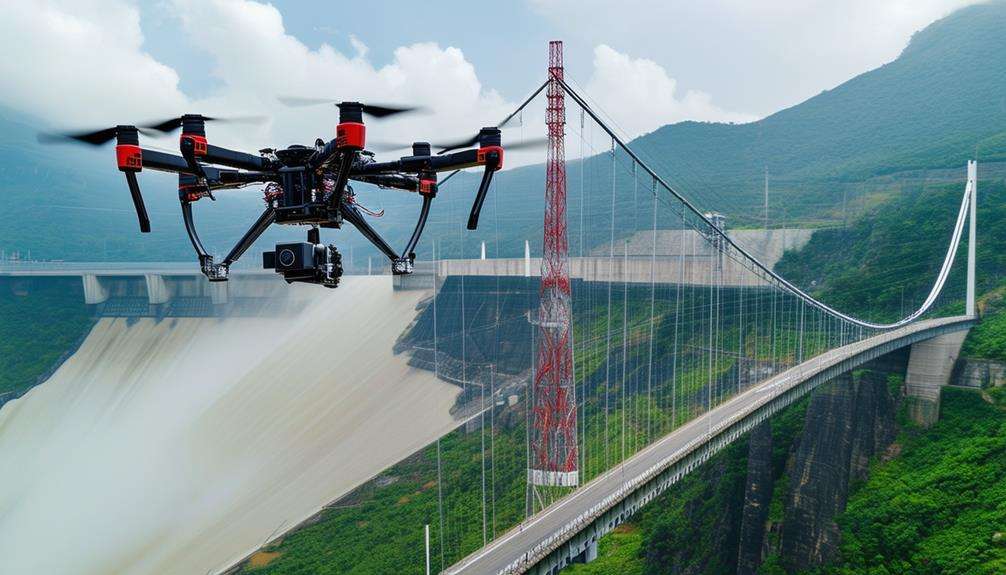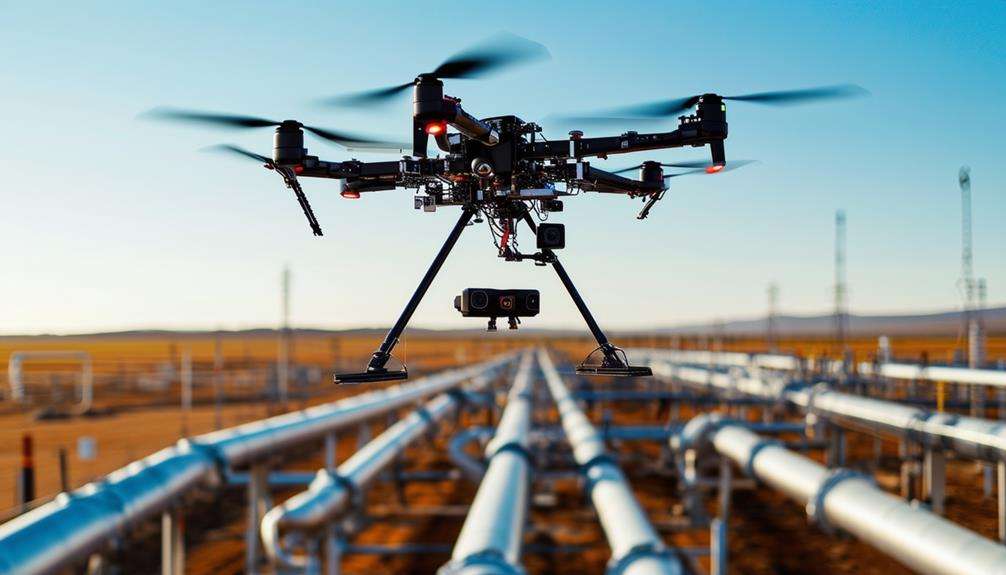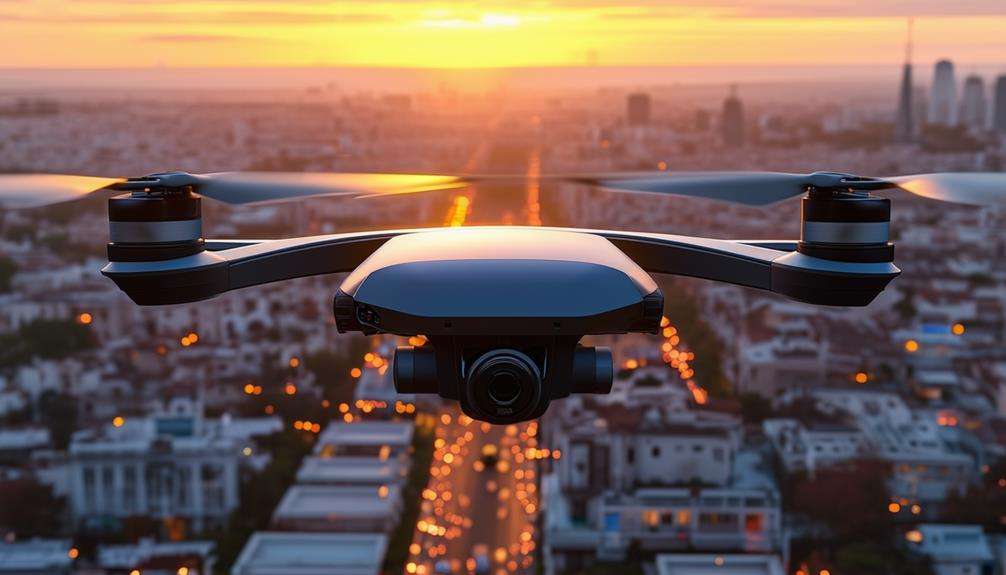The Legal Landscape of Commercial Drone Operations
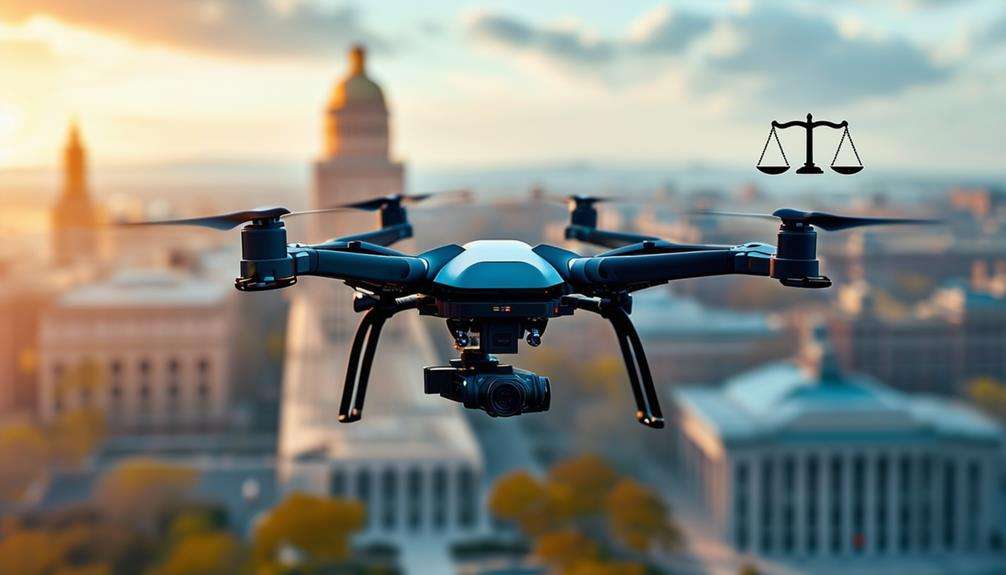
Navigating the legal landscape of commercial drone operations requires a thorough understanding of the applicable regulations. The Texas Government Code Chapter 423 and FAA Part 107 regulations serve as the foundational compliance requirements.
Additionally, local municipal regulations can introduce further complexities, and failure to adhere to these can result in significant fines and legal consequences. To ensure your operations remain lawful and successful, it is essential to familiarize yourself with these rules and adopt best practices accordingly.
Texas State Drone Laws
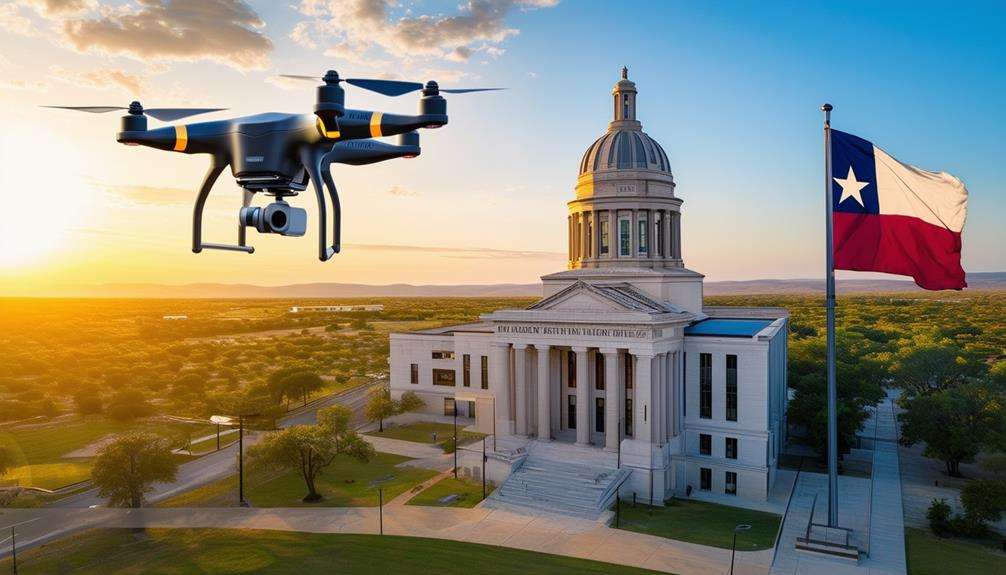
When operating drones in Texas, it's essential to comply with the regulations outlined in Texas Government Code Chapter 423. These laws ensure that your commercial drone use meets legal standards, particularly concerning privacy and surveillance.
For instance, sections 423.003 and 423.004 address offenses related to surveillance and capturing images without consent. It's illegal to use a drone to capture images of individuals on private property without their permission, a rule designed to protect privacy.
Additionally, local municipalities in Texas may have their own regulations governing drone operations. Always check with local authorities before flying to ensure you comply with all local requirements. Local laws can vary and may impose stricter guidelines than state laws regarding where and how you can operate your drone.
FAA Regulations for Drones
To operate drones commercially, you must adhere to the FAA's Part 107 regulations. The Federal Aviation Administration (FAA) has established comprehensive rules to ensure UAS operators maintain safe flying practices. If your drone weighs more than 0.55 lbs, you must register it with the FAA before engaging in any commercial activities. Comprehending and following these regulations is essential to legally operate drones for commercial purposes.
Under Part 107, UAS operators are required to pass an aeronautical knowledge test and follow specific operational guidelines. These guidelines include:
- Flying below 400 feet
- Keeping the drone within visual line-of-sight
- Avoiding operations over people without proper FAA authorization
These measures are designed to promote safe flying and compliance with federal law.
Here's a quick summary:
| Requirement | Details |
|---|---|
| Drone Registration | Required for drones over 0.55 lbs |
| Knowledge Test | Must pass Part 107 test for commercial drone use |
| Operational Guidelines | Fly below 400 feet, visual line-of-sight, no flying over people without authorization |
| FAA Authorization (Section 44807) | Needed for certain operations outside standard Part 107 rules |
Local Municipal Regulations
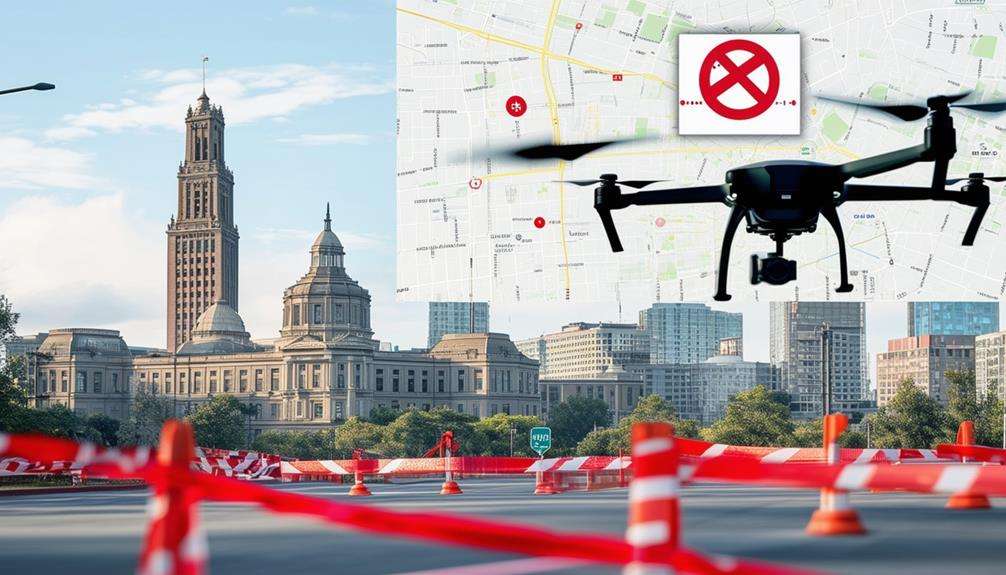
While federal regulations provide a baseline for commercial drone operations, local municipalities often impose additional rules that you must follow. These local regulations can significantly impact your ability to operate drones effectively and legally. Municipal regulations may include specific flight restrictions, such as no-fly zones around schools or government buildings, or stricter altitude limits compared to federal rules. Privacy concerns also play a role, with some municipalities requiring you to avoid flying over private property without explicit permission.
To navigate these complexities, consider the following key points:
- Operating Areas: Verify designated zones where drones are permitted or restricted.
- Permits and Licenses: Some municipalities may require additional permits or licenses for commercial drone operations.
- Legal Issues: Non-compliance with local regulations can lead to fines or legal action.
- Privacy Concerns: Be aware of local privacy laws to avoid infringing on individuals' rights.
Understanding and adhering to local regulations is crucial for your commercial drone operations. Each municipality may have different rules, so always research and ensure compliance to avoid legal issues and maintain smooth operations.
Compliance and Penalties
Ignoring FAA regulations for commercial drone operations can lead to substantial fines and severe legal consequences. If you operate a commercial drone, adherence to Part 107 rules is mandatory to avoid penalties. The FAA can impose fines of up to $32,666 per violation, making compliance crucial. Key areas of compliance include registration requirements, safety guidelines, and airspace restrictions.
Failure to follow these regulations can result in enforcement actions and significant financial penalties. Violating airspace restrictions or ignoring safety guidelines can lead to immediate legal repercussions. Similarly, non-compliance with registration requirements can also result in severe penalties.
Here's a quick breakdown:
| Violation Type | Possible Penalty | Legal Consequence |
|---|---|---|
| Airspace Restrictions | Up to $32,666 per violation | Legal actions and financial penalties |
| Safety Guidelines | Up to $32,666 per violation | Enforcement actions and fines |
| Registration Requirements | Significant financial penalties | Legal repercussions |
Understanding and adhering to FAA regulations is essential for maintaining compliance in commercial drone operations. By following Part 107 rules, you can avoid the hefty penalties and enforcement actions associated with non-compliance. Always stay updated on FAA guidelines to ensure your operations remain within legal boundaries.
Best Practices for Operators
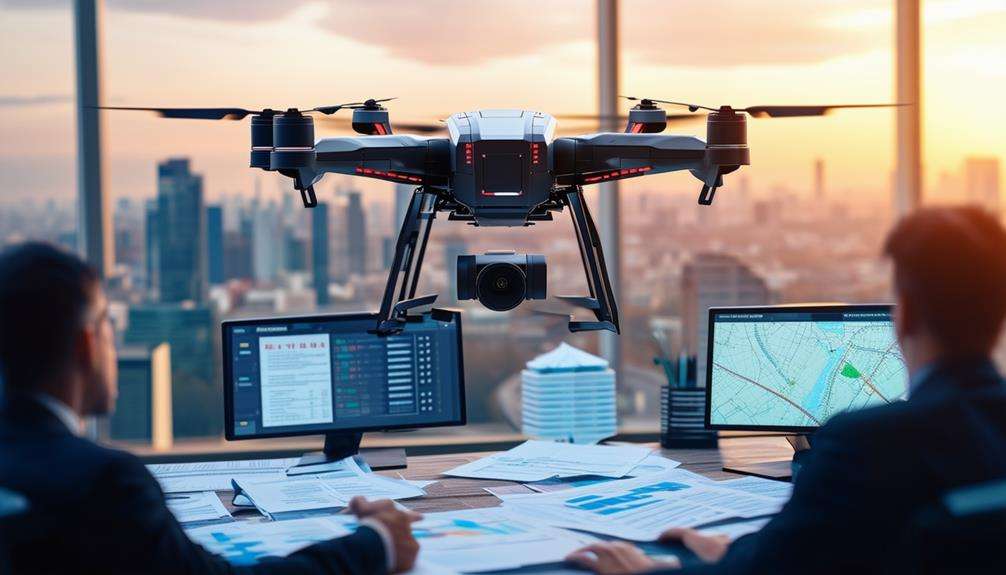
Obtaining a Part 107 Remote Pilot Certificate is the initial step toward legally and safely operating commercial drones. This certificate confirms that you have met the necessary licensing requirements and are equipped to follow FAA guidelines, ensuring compliance and promoting safe and responsible drone operations.
To maintain legal and safe operations, commercial drone operators should adhere to the following best practices:
- Stay Updated: Regularly check the FAA website for updates on UAS regulations and airspace restrictions to ensure ongoing compliance.
- Pre-Flight Checks: Conduct thorough pre-flight evaluations, including assessing weather conditions, verifying equipment functionality, and reviewing airspace restrictions.
- Communication: Maintain effective communication with local air traffic control when operating near controlled airspace to prevent potential conflicts.
- Education and Training: Continuously educate yourself and your team on the latest FAA guidelines and best practices for safe drone operations.
Understanding and adhering to airspace regulations is crucial for commercial drone operators. Following these guidelines ensures that your drone operations are both legal and safe. Compliance with the FAA's Part 107 operational rules not only helps to avoid penalties but also promotes a safer airspace for all users.
Conclusion
Navigating the legal landscape of commercial drone operations requires careful attention to Texas state laws, FAA regulations, and local municipal rules. Compliance with these regulations is essential to avoid substantial fines and legal issues.
Ensure you have the necessary certifications and adhere to best practices to maintain safety and operational success. By doing so, you can mitigate risks and ensure your drone activities are both lawful and efficient.

